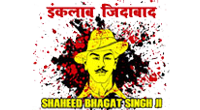GOVERNANCE IN INDIA: WOMEN'S RIGHTS
INTRODUCTION
The rape and subsequent death of a New Delhi university student in December 2012 sparked nationwide furor over Indian authorities' lax treatment of sexual violence. After other such incidents surfaced, including the gang-rape and hanging of two teenage cousins in Uttar Pradesh, critics began scrutinizing aspects of Indian society that many claim have perpetuated violence and discrimination against women. The high-profile cases called attention to the broader issue of women's rights in India, a nation which ranks eighty-fourth out of 113 countries on the Economist's rankings of women's economic opportunity.
Women in India face myriad cultural challenges that impede social advancement, analysts say. Discriminatory family codes, lack of education, and cultural stigmas are only a few examples. Heightened media attention given to such inequities has raised pressure on the government to not just reform the institutional treatment of women, but also raise the level of dialogue on the larger issue of women's rights in a rapidly modernizing society.
GENDER INEQUALITY
The Indian constitution prohibits discrimination on the basis of sex, but the position of women remains unequal, according to a United Nations report. Women in India have long been subject to entrenched cultural biases that perpetuate the valuing of sons over daughters, who are often seen as an economic burden to families that fear high dowries and wedding costs, experts say.
Sex-selective abortions have occurred at staggering rates in India despite a 1996 ban on screening for such purposes: researchers say up to six hundred thousand female fetuses are aborted in India every year, or 2.2 percent of the annual birth rate. This has tipped the gender ratio so dramatically that in 2011, there were 914 girls for every one thousand boys among children up to six years old—the most imbalanced gender ratio since India's independence in 1947
Researchers point to other significant factors contributing to the normalization of sex selection, including inheritance laws. The Hindu Succession Act of 2005 granted women equal inheritance rights to ancestral and jointly owned property, but enforcement of this law is weak, say experts. Many women, particularly in northern India, are still deprived of their rightful inheritance.
INDIA'S SEXUAL ASSAULT LAWS
The December 2012 gang rape and subsequent death of a twenty-three-year-old student in New Delhi, ignited a national furor over India's treatment of women and the perceived culture of complicity with regards to sexual violence in India. Such cases occur on a regular basis, says CFR Fellow for Women and Foreign Policy Rachel Vogelstein, but this incident drew particular attention due to a few uncommon circumstances, including the publication of the victim's name and her father's outspokenness. "The fact that she was a middle-class girl striving for a middle-class life really rang a chord with a lot of Indians," says CFR Senior Fellow Isobel Coleman. "Here is a girl living a modern life and subjected to such barbaric treatment."
Rape complaints increased 25 percent between 2006 and 2011 in India, although it is unclear whether this represents a real uptick in crime or a greater willingness by victims to file charges or by the police to accept them. However, gender-based violence as a whole has worsened in India over the past several years. National Crime Record Bureau statistics show a 7.1 percent nationwide hike in crimes against women since 2010.
"It's really a constellation of factors hindering women's rights, including gender sex selection, literacy, child marriage, and violence."–Rachel Vogelstein, Council on Foreign Relations.
Under the Indian Penal Code, crimes against women include rape, kidnapping and abduction, molestation, sexual harassment, torture, homicide for dowry, and the importation of girls. But critics have voiced concern over the vagueness of their definitions, particularly that of rape. Often, perpetrators of severe sexual attacks are charged with criminal assault on a woman with "intent to outrage her modesty," an offense that carries a light penalty and is rarely enforced.
"Eve-teasing," a common euphemism for sexual harassment or molestation in public places, goes mostly unreported. Many analysts attribute this to a culture of complicity and the government's weak prosecution of such assault crimes. A study by the Hindustan Times found that in the last five years, fifty-one cases related to eve-teasing in the city of Jalandhar in Punjab were taken to court, and only five people were convicted, while thirty others were acquitted due to lack of evidence.
SEARCHING FOR JUSTICE
India's slow, overburdened, and under-funded criminal justice system has exacerbated the plight of rape and sexual assault victims, analysts say. Most rapes go unreported, largely because of cultural stigmas surrounding such incidents that could bring shame to victims and their families. Those who do report cases often face a dehumanizing experience. A lack of specialized training for police and doctors often drives the problem, reports Human Rights Watch and other rights groups.
Furthermore, rights activists say, the lack of uniform national standards for the examination and treatment of sexual assault survivors undermines the potential for a successful prosecution. Only around 26 percent of rape cases tried in court in 2011 resulted in convictions, and only four out of ten cases were reported, according to the National Crime Records Bureau, although these trends are not necessarily unique on a global scale. A study of forty acquitted rape cases in Delhi, where women comprise only seven percent of the police force, found that more than half of the acquittals were due to the police's failure to perform sufficient investigations.
India's slow, overburdened, and under-funded criminal justice system has exacerbated the plight of rape and sexual assault victims.
Still, some sexual assault victims face even worse injustice, as in the case of a seventeen-year-old village girl who was drugged and gang raped in northern Punjab in November 2012. She committed suicide after a police officer pressed her to drop the case and marry one of her attackers. Reports surfaced that officers had not only harassed the victim, but failed to register her case and attempted to broker an out-of-court settlement between her family and the families of her alleged attackers—a practice known locally as "compromise" that analysts say occurs often in some parts of the country.
Leniency in conviction and sentencing for juvenile offenders has also been cited as a recurring problem in the pursuit of justice for victims. This was highlighted in late August 2013 when India's Juvenile Justice Board handed down a sentence of three years in a juvenile detention facility for one of six defendants in the Delhi bus rape that killed a twenty-three-year-old student. By contrast, the six men arrested over the gang rape of a Swiss tourist in March 2013 all received sentences of life imprisonment at their trial in July.
A Delhi court sparked further protests by acquitting in late August 2013 a twenty-two-year-old man from West Bengal accused of kidnapping and raping a fifteen-year-old girl whom he later married. The court ruled that consensual sex with minors was not punishable by the 2012 Protection of Children Against Sexual Offenses Act, which defines those under eighteen years of age as children.
Many rights activists have pointed to a pervasive culture of complicity when it comes to sexual violence against Indian women, charging that some senior political and religious leaders perpetuate the practice of "blaming the victim." In June 2014, the home minister of central Chhattisgarh state said that rapes happen "accidentally," renewing public outrage just days after another minister stated that rape was "sometimes right, sometimes wrong." Violence against women is so lightly condemned that over the past five years, Indian political parties have nominated 260 candidates who have outstanding charges for crimes against women, according to Coleman.
"It's really a constellation of factors hindering women's rights, including sex selection, literacy, child marriage, and violence," says CFR's Vogelstein. "In addition to that, there's been a culture of impunity around a lot of these issues. They have laws on the books that address all these issues, yet these problems continue to flourish in many parts of India."
POLITICAL REPRESENTATION
One of the major elements hampering women's rights progress in India is the chronically low level of female political representation, analysts say. While Sonia Gandhi, the widow of former prime minister Rajiv Gandhi, presides over the Indian National Congress Party, only about 10 percent of parliament members are women. By contrast, women comprise 17 percent of the U.S. Congress, and in Pakistan, the National Assembly reserves 17.5 percent of its seats for women.
Progress on this front has been halting. In January 2012, India's lower house delayed for at least a year a bill that would have reserved one-third of seats in Parliament and in state assemblies for women. The legislation was passed in the upper house in March 2010 after a thirteen-year debate. Once the amendment is ratified by the lower house, it still must be approved by at least half of the country's state legislatures and the president—a process that will likely drag on for years and ensure that parliament, at least in the near term, will be dominated by men. To date, the bill is still pending.
ROAD TO REFORM
The national uproar in the aftermath of the Delhi gang rape prompted the Indian government to address calls for reform of the country's judicial system. As provisional measures, Delhi ordered the use of so-called fast-track courts in several sexual assault cases in the capital, and established the first special court to handle crimes against women. The court, which opened in West Bengal in late January, is staffed and run entirely by women—a forum that officials hope will encourage more female victims to come forward. (In September 2013, the trial for the Delhi bus rape case ended in a guilty verdict and death sentences for four men charged with the crime. However, experts say an appeals process may drag on for some time.)
A breakthrough came in March 2013 when India's parliament passed a new law further protecting women against sexual violence. The legislation criminalizes stalking, voyeurism, and sexual harassment, and imposes the death penalty on repeat offenders and for rape attacks that lead to the victim's death. The law also makes it a crime for police officers to refuse reporting cases when victims file complaints of sexual attacks. The legislation came after Prime Minister Manmohan Singh set up a special committee in January 2013 that produced a 650-page reportof suggestions on how to strengthen criminal laws dealing with sexual assault against women. In June 2014, the new BJP-led government pledged "zero tolerance" for violence against women in response to the gang-rape and lynching of two lower-caste cousins in Uttar Pradesh.
Much of the work to improve conditions for women, however, is being done at the grassroots level, where some Indian and foreign nongovernmental organizations are engaging with the male community in an effort to elevate women in society. For instance, in Bihar state, a village planted mango and lychee trees to celebrate the birth of a girl, with the idea that profit from the fruit would help support the family and discourage the community from marrying off its daughters at young ages. Saba Ghori, a senior South Asia women's issues adviser at the U.S. State Department, says the real gains in India have been at the local level, where women village leaders have been so effective that certain states have called for a greater percentage of women in such roles.
However, some analysts say the government's actions have merely been a knee-jerk political expedient and will not materially improve much for women in the long run. "It's a sort of Band-Aid," says Coleman. "Laws alone aren't going to change this. Not that laws aren't important—they are—but we're talking about social attitudes, cultural practices, and those don't change overnight."
This was evidenced in August 2013 when five men allegedly raped a twenty-two-year-old photojournalist in Mumbai, considered one of India's safest cities for women, while on assignment for a magazine. The incident triggered sit-ins and protests, and will likely receive heightened scrutiny as reports revealed that two of the five accused could be minors and thus tried under India's lenient Juvenile Justice Act.
Many rights groups say the government has more work to do, particularly because it failed to outlaw marital rape and handle the legal impunity afforded to members of the military. Still, other activists say the new measures, which imposed much stricter penalties for a range of crimes, mark some of the most significant progress in India's laws protecting women.
"India is uniquely compelling because it's a BRIC economy," says Vogelstein. "India is emerging, and the degree to which women and girls are hampered in their ability to participate fully in their society and economies is going to be detrimental to the country's modernization."
ADDITIONAL RESOURCES
The World Economic Forum's Global Gender Gap Index is a framework that captures the magnitude of gender-based disparities and tracks their progress.
The Economist's Women's Economic Opportunity Index assesses the environment for female employees and entrepreneurs across 128 countries.
This report by the UN Population Fund documents the scope, prevalence, and inequities of child marriage.
This AP article provides analysis on how modernization is fueling a crisis of sexual assault in India, where repeated cases of gang rapes have ignited a national debate.






